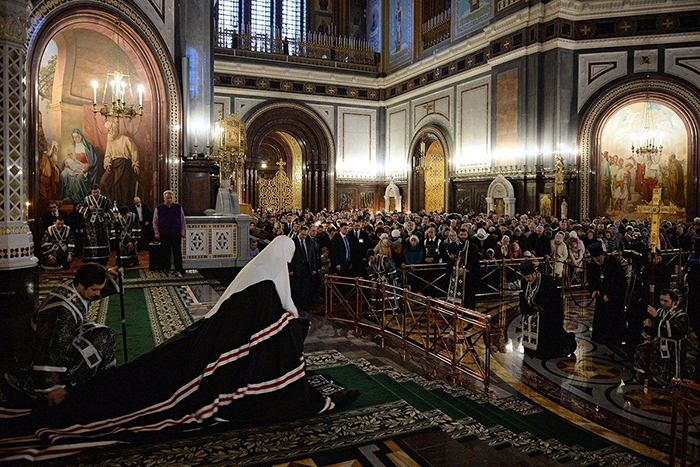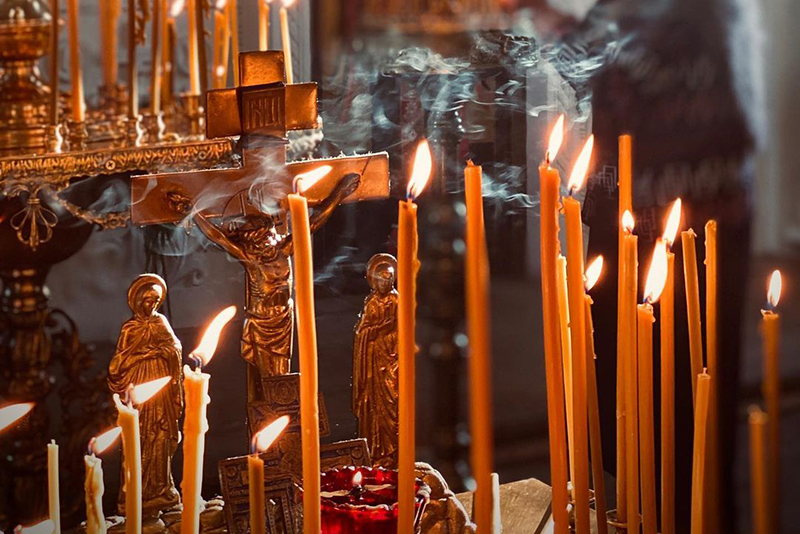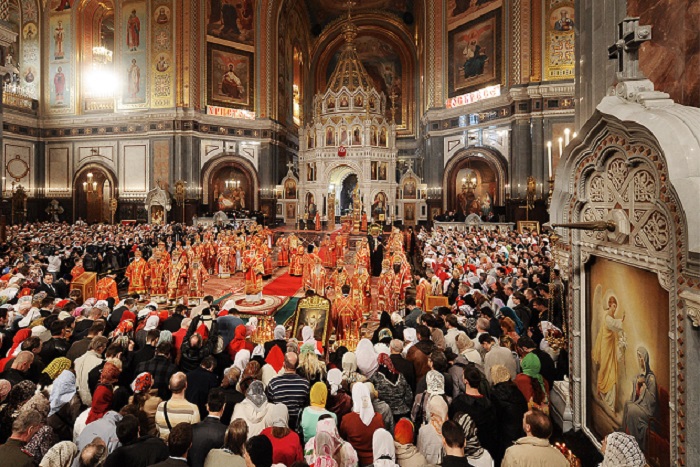
It is Bright Week now. We continue to celebrate Easter during these seven happy days. Why is this week called Bright? How did the early Church use this time? The Church finished a lengthy period of catechisation of those who wanted to become Christians on Holy Saturday. The catechumens got baptized and could finally take part in the Eucharist on Easter along with all the faithful. Catechisation ended in Baptism, the grace of which did not only supply people with some knowledge about Christ but allowed them to participate in his nature. However, a special period of mystagogical catechisation began during the Bright Week. This time, the Church taught her new members about the tenets of our faith that they couldn’t understand prior to their Baptism. In fact, the early Church was characterized by its strict discipline of non-disclosure of the Sacraments to the outer world and even to the catechumens not enlightened by the Spirit and who therefore couldn’t see some of the tenets of Orthodox faith with spiritual eyes. Here is a list of major stages of mystagogical catechism as drawn by Saint Cyril of Jerusalem (4th century).
1. The Mystery of Renouncing Satan and Unity with Christ
Saint Cyril reminds the new believers how they stood at the gate of the paradise – the narthex – and renounced Satan. The holy hierarch says that everything they experienced during the Sacrament of Baptism has its parallels in the Old Testament Scriptures. “There, the tyrant was pursuing that ancient people even to the sea; and here the daring and shameless spirit, the author of evil, was following you even to the very streams of salvation. The tyrant of old was drowned in the sea; and this present one disappears in the water of salvation.” (St. Cyril of Jerusalem, Mystagogical Lecture 1, 3). Saint Cyril then explains why people turn to the west while renouncing Satan. The West is the region of sensible darkness, and he being darkness has his dominion also in darkness. As we turn to the East – the direction from which the sun appears – we turn to Christ.
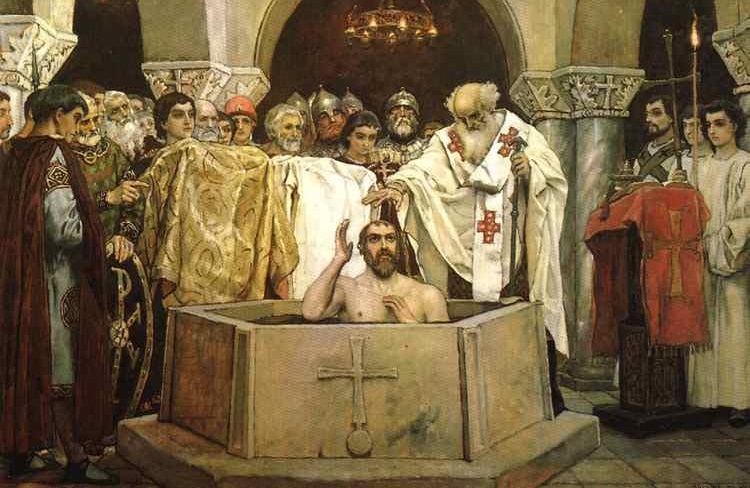
2. The Mystery of Putting Off Clothes, Anointing, and Baptism
The Second Mystagogical Lecture explained the meaning of putting off one’s tunic, getting anointed with exorcised oil and the Baptism itself. Putting off one’s tunic means an image of putting off the old man with his deeds. (Colossians 3:9), which waxes corrupt in the lusts of deceit (Ephesians 4:22).
The bishop of Jerusalem says that by putting off our clothes, we imitated Christ, who was stripped naked on the Cross, and by His nakedness put off from Himself the principalities and powers, and openly triumphed over them on the tree. The hierarch calls all the faithful to repeat the following words of the Spouse of Christ from now on: I have put off my garment, how shall I put it on? (Song of Songs 5:3).
“O wondrous thing!” Cyril exclaims. “You were naked in the sight of all, and were not ashamed.” Thus, he likens the nudity of those who get ready for Baptism to the original innocence of Adam (See Genesis 2:23). After anointing the catechumens with exorcised oil, which has the power to burn and cleanse away the traces of sins, as well as to chase away all the invisible powers of the evil one, the officiant leads them to the Holy Font where they unite with Christ. The holy hierarch teaches the Church that “Christ was actually crucified, and actually buried, and truly rose again; and all these things He has freely bestowed upon us, that we, sharing His sufferings by imitation, might gain salvation in reality.” (St. Cyril of Jerusalem, Mystagogical Lecture 2, 5).
3. The Mystery of Chrismation
The Lord, having been washed in the river Jordan, came up from its waters; and the Holy Ghost in the fullness of His being lighted on Him, like resting upon like. Likewise, upon immersion into the font, the faithful become Christs, that is, anointed ones. Saint Cyril urges everyone not to suppose this to be plain ointment, “for as the Bread of the Eucharist, after the invocation of the Holy Ghost, is mere bread no longer, but the Body of Christ, so also this holy ointment is no more simple ointment, nor (so to say) common, after invocation, but it is Christ’s gift of grace.” (Saint Cyril of Jerusalem, Mystagogical Lecture 3, 3). The Holy Chrism is applied to all senses so as to make you able to stand against the power of the adversary (Ibid.) and vanquish him. Cyril emphasized that we are called Christians only after the Chrismation. Prior to that, we had properly no right to this title, but were advancing on our way towards being Christians. We must keep this anointing of the Holy Spirit unspotted: for it shall teach us all things, if it abide in us. (See 1 John 2:27).

4. The Mystery of the Body and the Blood of Christ
The archpastor of the Jerusalem Church speaks unanimously with other Holy Fathers that the bread and the wine are changed into the Body and Blood of Christ during the Eucharist. “Who shall dare to doubt,” the bishop exclaims, “since He has Himself affirmed and said, This is My Blood?” (Ibid., Mystagogical Lecture 4, 1). The holy hierarch reminds his audience of the miracle in Cana of Galilee, and states that if Christ turned the water into wine, akin to blood, it isn’t incredible that He should have turned wine into blood and invite people not to a bodily marriage but rather to the Feast of Christ in his Kingdom, where his Chalice is overflowing. (See Psalms 23:5).
5. The Mystery of Anaphora
Having told his audience about the meaning and importance of the previous mysteries of the faith, Saint Cyril proceeds to talk about the Liturgy and what they should and should not do during it. The bishop instructs his listeners how to thank God for his benefactions, how to praise him with Cherubim, how to pray for all people. He explains the petitions of the Lord’s Prayer. Saint Cyril warns the new Christians that they must partake of the Body and the Blood of Christ with caution and awe. “Sever not yourselves from the Communion; deprive not yourselves, through the pollution of sins, of these Holy and Spiritual Mysteries. (Ibid. Mystagogical Lecture 5, 23).
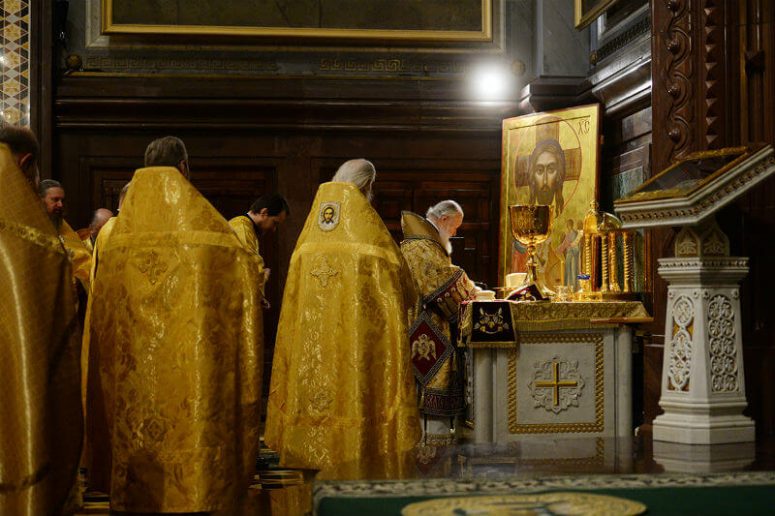
Therefore, the Bright Week was the special time of mystagogical catechism for newly-baptized members of the Christian community. These new Christians would go to church every day during the week, wearing their white baptismal robes. Perhaps, it the color of their robes that gave this week its name. They took off their baptismal robes on the eighth day and washed off the Holy Chrism. Let us remember during this week, as well as throughout our lives, that we all wore those white baptismal robes and promised to keep them spotless. Let us make our faith deeper and our experience of participation in the Easter Mystery richer.

